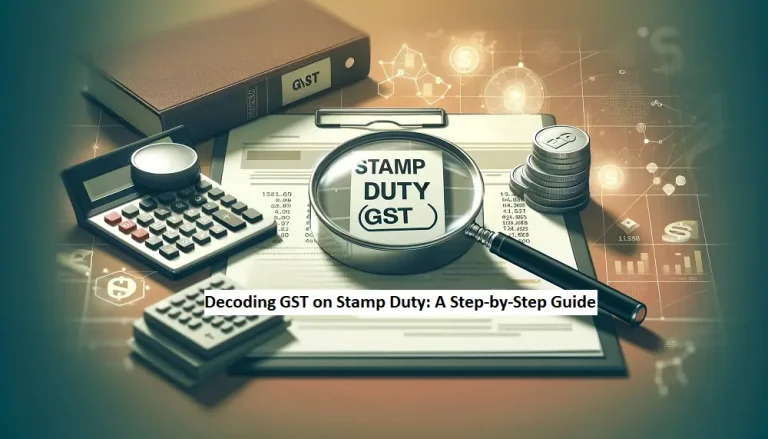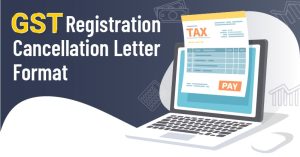Taxes can be confusing, so understanding GST on stamp duty and stamp pads is essential for success. We will cover some key details about it here such as HSN codes for stamp pads and why consent letters for GST on stamp paper are vitally important.
GST on Stamp Duty: What You Need to Know
Let’s start at the beginning. Stamp duty is a tax charged by states when certain activities, like purchasing property or entering agreements, take place. Although GST still exists today, stamp duty still exists but might now be included with other costs of goods or services purchased.
Cracking the Code for Stamp Pads and GST Rate
Next we turn our attention to stamp pads. Each product possesses its own HSN code; stamp pads fall under Chapter 9611. When purchasing stamp pads, GST (general sales tax) also must be added; its rate depends upon current GST rules but we’ll refer to it simply as GST rate for convenience.
Why Consent Matters in Stamp Paper Deals
When dealing with legal matters that use stamp paper, consent letters can help show everyone involved is following the rules. They show all parties are on board. It shows they understand and accept GST is included. They indicate everyone involved agree to follow it. It shows they all stand on equal ground.
Cracking the Stamp Code: HSN and GST Rate Details
Different stamp types each have unique HSN codes: postal stamps, revenue stamps and special adhesive ones all fall under different HSN categories. Just as with stamp pads, each has a GST rate associated with them–think of it like paying an extra charge when using or purchasing stamps!
Stay Up-To-Date With Stamp GST Rate Changes
GST rates can change, so it is advisable to keep an eye out for updates in order not to get surprised by unexpected costs. Checking with someone familiar with taxes will allow you to ensure you pay what’s owed – be it checking online at their official GST website or speaking directly with someone about tax matters can ensure you pay what should be.
Also read – What is Goods and Service Tax (GST)?
HSN Codes and GST Rates Are Crucial in Simplifying Details
Let’s dive deeper into why HSN codes and GST rates matter so much for simplifying product details. HSN codes act like secret language that enable everyone involved with an item to understand it better while GST is simply added onto its original cost; when seen together they serve as roadmaps that make understanding costs simpler.”
Understanding Your Stamps: More on HSN Codes and GST Rates
Remember when we discussed different kinds of stamps having different codes? Let’s dive deeper. Postage stamps (those used for sending mail) each have their own HSN code; similarly for revenue and special adhesive stamps which come with separate GST rates – once you know where all this belongs it all makes perfect sense! It sounds complicated at first but once you learn more it becomes intuitive–sorting things out becomes second nature.
Consent Letters Make GST Stamp Paper Easy
Consider consent letters like permission slips for school field trips: they show everyone agrees with following the rules when it comes to GST on stamp paper – otherwise things might get confusing quickly! So whenever using stamp paper for legal issues, always include this consent letter so as to avoid surprises along the way.
Stay Up-To-Date with GST Rate Changes Tax rates change constantly. That’s why staying informed of them is vital; consider keeping tabs on current events with news feeds from apps you subscribe to like CNN and the BBC, for instance. Checking official GST websites or seeking advice from someone familiar can ensure you know of any updates to GST rates so you can avoid unexpected bumps along your journey.
Conclusion:
Simplifying GST stamp duty tax handling can save time and frustration in both personal and professional realms alike. By remembering HSN codes, comprehending GST rates, receiving consent letters for stamp paper transactions, and remaining informed you’ll not only keep yourself out of confusion but can navigate tax matters with greater confidence. Keep it straightforward by staying informed while remaining uncomplicated!
Frequently Asked Questions
What is GST on Stamp Duty?
GST on Stamp Duty is a tax levied on the service of providing stamp duty. This tax applies to the service provided by the government or authorized agencies for issuing stamps required for various legal documents. Stamp duty is a state subject, and GST is a central tax, so the interaction between the two can sometimes be complex.
Who is liable to pay GST on Stamp Duty?
Generally, the liability to pay GST on Stamp Duty falls on the service provider, which is usually the government or authorized agencies issuing stamps. However, in some cases, the liability may be transferred to the service recipient under reverse charge mechanism if they are a business entity.
What is the rate of GST on Stamp Duty?
The rate of GST on Stamp Duty can vary depending on the type of stamp duty and the state in which it is levied. As of now, the GST rate on stamp duty is generally 18%. However, it’s essential to check the specific rates applicable in your state for accurate information.
Are there any exemptions from GST on Stamp Duty?
Yes, certain exemptions from GST on Stamp Duty may apply. For example, stamp duty on certain instruments like negotiable instruments, insurance policies, and court fees may be exempt from GST. Additionally, exemptions may vary from state to state, so it’s crucial to check the specific rules in your jurisdiction.
How is GST calculated on Stamp Duty?
GST on Stamp Duty is calculated by applying the applicable GST rate to the value of the stamp duty. The value of the stamp duty is typically the amount specified in the document for which the stamp is being issued. For example, if the stamp duty value is ₹1,000 and the GST rate is 18%, the GST amount would be ₹180.
Can GST input tax credit be claimed on Stamp Duty?
Generally, GST input tax credit cannot be claimed on Stamp Duty as it is a statutory fee and not considered as a supply of goods or services. However, there may be some exceptions where input tax credit can be claimed, such as when the stamp duty is incurred for furtherance of business activities subject to specific conditions.
How to pay GST on Stamp Duty?
GST on Stamp Duty is typically paid at the time of purchasing the stamp or when the stamp duty document is executed. The payment is made to the government or authorized agencies responsible for collecting stamp duty. Payment methods may vary depending on the jurisdiction, but commonly include online payment options, banks, or designated offices.
What are the consequences of non-payment of GST on Stamp Duty?
Non-payment of GST on Stamp Duty can lead to penalties and legal consequences. It’s essential to comply with GST regulations to avoid any potential fines or enforcement actions by the tax authorities. Additionally, non-compliance can negatively impact business operations and reputation.
Can individuals claim GST refund on Stamp Duty?
Generally, individuals cannot claim GST refund on Stamp Duty as it is not considered as an input tax for them. GST refunds are primarily available to registered businesses for taxes paid on inputs used in the course of business activities. However, specific rules may apply in certain cases, so it’s advisable to consult with a tax professional.
Is GST on Stamp Duty applicable uniformly across India?
No, GST on Stamp Duty is not applicable uniformly across India. While GST is a central tax, stamp duty is a state subject, and each state has its own laws and regulations regarding stamp duty and its interaction with GST. Therefore, the applicability and rates of GST on Stamp Duty may vary from state to state.




